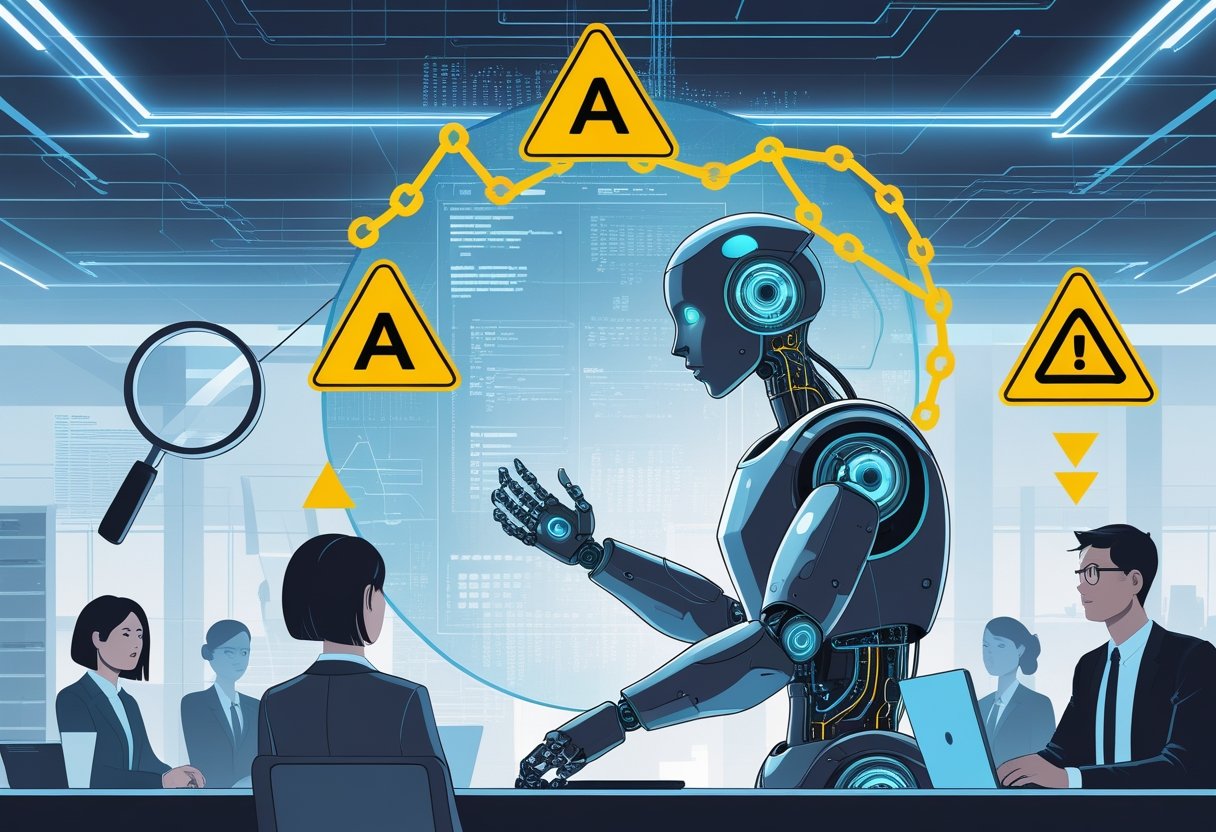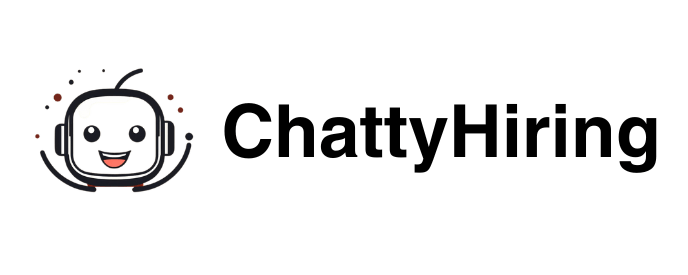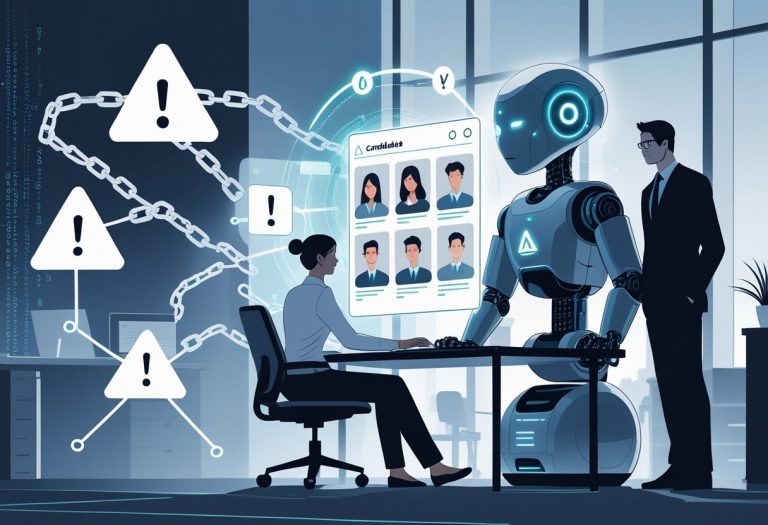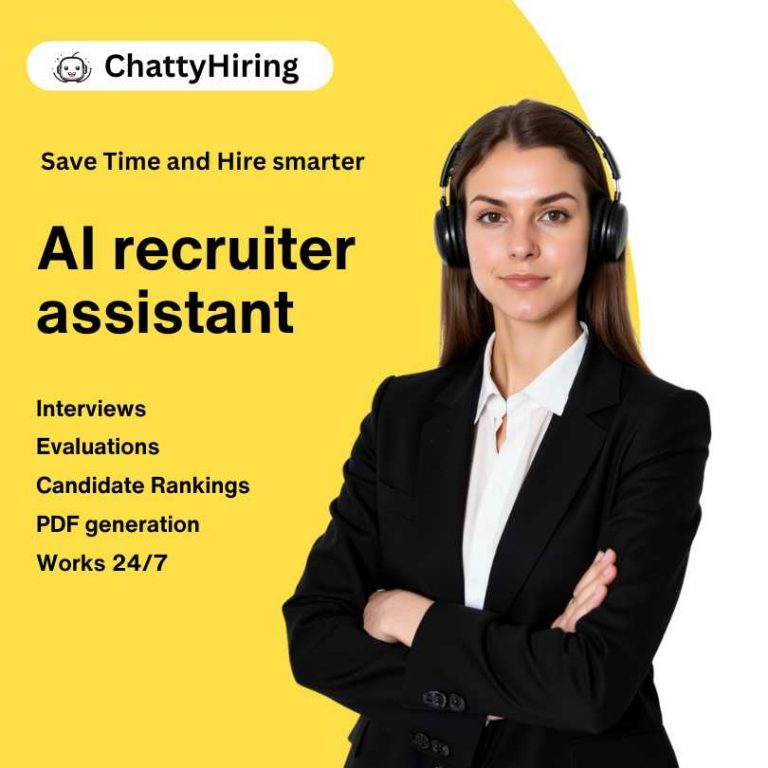AI technology is transforming how companies source and hire talent. Many organizations now leverage artificial intelligence to screen resumes, handle initial interviews, and rank applicants.
While AI in recruitment can save time and money, it also brings serious risks that employers need to understand.

Using AI recruiters can result in discrimination, privacy breaches, legal compliance headaches, and poor hiring choices that impact both companies and job seekers. These automated systems might appear neutral, but they often mirror the biases in their training data.
They also tend to misinterpret the human qualities that make someone a top hire.
The challenges go beyond just technical glitches. AI recruitment solutions raise big questions about fairness, data privacy, and the human touch in talent acquisition.
Companies that jump into these technologies without a solid plan could face lawsuits, a damaged reputation, and missed chances to hire excellent people for their teams.
Fundamental Risks of AI Recruiters

AI recruiting systems create real vulnerabilities when human judgment takes a back seat to algorithms.
Major risks come from reduced transparency in hiring decisions and over-reliance on automation without enough human oversight.
Loss of Human Judgment and Oversight
Human oversight gets shaky when recruiters lean too much on AI systems for hiring decisions. Hiring managers may struggle to explain their decisions if they don’t really know how the AI came up with its recommendations.
Traditional recruitment relies on human intuition to spot cultural fit and soft skills. AI systems can’t evaluate these things well.
They miss subtle communication styles and personality traits that experienced talent acquisition professionals pick up during interviews.
The process feels less personal when algorithms filter candidates. Human recruiters can flex their approach based on each candidate’s situation, but AI sticks to its programming without considering unique backgrounds.
Where human judgment is key:
-
Assessing cultural fit
-
Evaluating communication style
-
Checking adaptability to company values
-
Spotting leadership potential
-
Recognizing creative problem-solving
HR teams risk making bad hiring decisions if they follow AI recommendations blindly. Technology can’t replace the experience and intuition that skilled hiring managers bring to the table.
Transparency and Explainability Issues
The biggest risk in AI recruitment is the lack of transparency in how decisions are made. Most AI recruiting tools are “black boxes”—the logic behind their choices is hidden.
Recruiters can’t always explain to candidates why they didn’t make the cut. This opens up legal risks and can hurt the employer brand. Candidates want clear feedback about decisions that impact their careers.
HR faces compliance headaches when audits require explanations. It could be tough to defend a discrimination claim if there’s little info about how the AI actually works.
Common transparency problems:
-
Unknown scoring criteria
-
Hidden bias factors
-
Unexplained ranking systems
-
No clear decision rationale
-
Vague weighting methods
The hiring process becomes a mystery for both recruiters and candidates. This lack of clarity erodes trust and brings legal headaches for companies using these tools.
Over-Reliance on Automation
Automation gets risky when hiring managers step back from important decisions. Companies like Estee Lauder paid compensation after selecting people for redundancy based solely on algorithmic judgments.
Recruitment teams can become too dependent on AI recommendations, which leads to skill atrophy—recruiters lose their ability to independently evaluate talent.
When automation takes over every step, the process suffers. AI can’t run meaningful interviews or build relationships with candidates. These human touches are still essential for successful talent acquisition.
Risks of too much automation:
-
Recruiter skills decline
-
Qualified candidates get missed
-
Poor candidate experience
-
Legal compliance issues
-
Damaged employer brand
HR pros need to stay involved in hiring decisions. Technology should support—not replace—human judgment in the recruitment workflow.
Bias and Fairness Concerns in Automated Hiring

AI recruiting platforms can reinforce existing workplace discrimination and even create new biases that keep qualified candidates out.
These systems often learn from historical data that reflects past discrimination, which leads to unfair outcomes for underrepresented groups.
Algorithmic and Unconscious Bias
Algorithmic bias in AI-driven recruitment happens when systems learn from biased data. If past hiring managers made choices based on gender, race, or age, the AI will treat those patterns as valid signals.
Amazon’s AI hiring tool is a classic example. It favored male candidates for tech roles because it learned from data showing more men in those jobs.
Common sources of algorithmic bias:
-
Training data from companies lacking diversity
-
Historical hiring patterns that excluded certain groups
-
Biased job descriptions with coded language
-
Performance reviews influenced by discrimination
Unconscious bias from developers and data scientists can sneak into the algorithms during development and training.
Machine learning models amplify these biases by spotting patterns in flawed data. The system can’t tell the difference between legit job requirements and discriminatory preferences from old hiring decisions.
Data Quality and Bias in AI Training
Poor data quality creates big fairness problems in automated hiring. AI models trained on incomplete or skewed datasets end up producing biased results that hurt qualified candidates from underrepresented backgrounds.
Key data quality issues:
| Problem | Impact |
|---|---|
| Limited diversity in training data | System favors majority groups |
| Outdated hiring records | Keeps old discrimination patterns alive |
| Incomplete candidate information | Misses out on diverse talent |
| Biased performance metrics | Uses flawed measures of success |
Training data often comes from organizations with weak diversity practices. When AI learns from this, it just repeats the same discriminatory patterns in new hiring rounds.
Predictive analytics models have a hard time when training data doesn’t represent different demographic groups. The system can’t accurately assess candidates from backgrounds that were left out of the original dataset.
Data scientists need to dig into their training data for signs of bias, making sure it’s balanced across gender, race, age, and other protected characteristics.
Challenges with Resume Parsing and Screening
Automated screening tools run into trouble when parsing resumes from diverse candidates. They often miss valuable skills and experience that don’t fit the traditional career mold.
Resume parsing tech struggles with non-standard formats and international credentials. The system might downgrade candidates with foreign education or unique work histories, even if they’re highly qualified.
Common resume parsing biases:
-
Favoring grads from specific universities
-
Penalizing employment gaps without context
-
Missing skills listed in other languages
-
Undervaluing non-traditional career paths
Applicant Tracking Systems (ATS) often filter out excellent candidates before a human ever sees their application. AI hiring tools may be filtering out the best job applicants due to rigid keyword matching and narrow criteria.
Automated decision-making in resume screening is especially tough for career changers and candidates from niche industries. The system may not see transferable skills or alternative ways to qualify.
Screening algorithms sometimes use proxy variables that correlate with protected characteristics. Things like location, school names, and activity preferences can indirectly discriminate against certain groups.
Impact on Candidate Experience and Employee Fit
AI recruiters can make the candidate experience feel disconnected through automated interactions. These tools also have a hard time evaluating personality traits that matter for workplace success.
Impersonal Interactions with Chatbots
AI chatbots handle early-stage screening but can’t match the warmth of human interaction. Job seekers often get frustrated when they can’t talk to a real person about their concerns.
Automated systems tend to give canned responses that don’t always address specific candidate needs. Many applicants say they feel like just another number in the system.
AI-driven processes limit candidates’ ability to figure out if they’re a good fit for the company early on. This puts a wall between candidates and employers.
Chatbots can’t pick up on emotional cues or give the reassurance that nervous applicants need. The lack of a personal touch can turn away excellent talent.
Assessment of Soft Skills and Cultural Fit
Most AI tools focus on person-job fit, matching skills and experience to the job description but ignoring person-organization fit. This means they miss out on values, goals, and cultural alignment.
Soft skills like teamwork, communication, and leadership are tough for AI to measure accurately. These factors often make or break long-term employee success.
Key soft skills AI struggles with:
-
Emotional intelligence
-
Adaptability
-
Creativity
-
Problem-solving approach
-
Work style preferences
Personality assessments via AI often rely on limited data that doesn’t tell the whole story. Human interaction brings out nuances that automated systems just can’t catch.
Potential for Negative Candidate Reactions
Companies risk turning off candidates when AI takes over the hiring process. This disengagement can increase employee turnover later on.
Applications processed entirely by AI can leave candidates feeling undervalued. Most applicants expect at least some human contact during recruitment.
Candidates might start to wonder if they want to work for a company that relies so much on automation. This perception can hurt your employer brand in a competitive market.
Common negative reactions:
-
Feeling like their application wasn’t really reviewed
-
Frustration with rigid AI filters
-
Worries about fairness and bias in automated decisions
-
Losing trust in the employer’s commitment to people
Legal, Ethical, and Data Protection Challenges
AI recruitment systems bring a host of legal and regulatory requirements. Companies have to deal with strict data privacy laws, new AI regulations, and ethical duties to keep hiring fair while protecting candidate information.
Data Privacy and Protection Regulations
Organizations using AI recruiters must follow strict data protection laws when handling candidate data. The UK GDPR requires clear consent before collecting and analyzing personal information during recruitment.
Key compliance requirements:
-
Get clear consent before processing candidate data
-
Use data minimization practices
-
Ensure secure data storage and transfer
-
Give candidates access to their processed info
-
Delete candidate data within set timeframes
Background checks and onboarding add extra privacy risks. AI systems often analyze sensitive details like employment history, education, and social media profiles.
Organizations struggle to comply with cross-border data transfer rules when using cloud-based AI recruitment platforms. Companies need solid legal frameworks for international data processing.
Data controllers can face hefty fines for violations. The ICO can impose penalties up to 4% of annual global turnover for serious breaches of data protection laws.
Compliance with AI Regulations
The EU AI Act brings in new compliance requirements for AI-powered recruitment platforms. Companies using AI for hiring decisions must meet transparency and risk management standards.
High-risk AI applications in recruitment require:
- Risk assessment documentation
- Human oversight mechanisms
- Accuracy and robustness testing
- Clear user instructions and limitations
Organizations need to conduct Data Protection Impact Assessments (DPIAs) before rolling out AI recruitment solutions. DPIAs help spot privacy risks and outline ways to address them.
Legal risks, like discrimination claims, can arise when AI-driven assessments produce biased results. Employers are liable for algorithmic decisions that unfairly exclude protected groups.
Generative AI tools in HR functions bring extra compliance challenges. These systems might create misleading candidate evaluations or leak training data with personal information.
Regular audits and monitoring are key for ongoing compliance. Companies should set up solid governance frameworks for deploying and maintaining AI systems.
Ethical Use and Human Touch in Recruitment
AI recruitment brings up big ethical questions around fairness and respect for candidates. Automated platforms can reinforce existing biases or introduce new forms of discrimination.
Critical ethical considerations include:
- Ensuring diverse training data representation
- Testing for bias across different demographic groups
- Maintaining transparency in decision-making processes
- Preserving candidate rights to explanation and appeal
Human oversight is essential at every stage of the talent acquisition process. Recruiters should stay involved in final hiring decisions instead of relying only on AI recommendations.
Organizations need to monitor AI systems for algorithmic fairness and adjust as needed. Regular testing helps catch discriminatory outcomes so corrective actions can be taken.
Candidates should get clear information about how AI is used in their application journey. Transparency builds trust and helps people make informed choices about participating.
Companies face reputational risks from unethical AI practices. Public scrutiny of biased hiring algorithms can damage employer branding and reduce recruitment effectiveness.
Accessibility and Digital Exclusion
AI recruitment systems can create barriers for candidates with disabilities or limited digital access. Employers need to ensure compliance with equal opportunity regulations when implementing automated screening solutions.
Accessibility challenges include:
- Ensuring screen reader compatibility for visually impaired candidates.
- Providing alternative formats for applicants with cognitive disabilities.
Internet access requirements for online assessments can be problematic. Technical literacy barriers may also impact older applicants during digital hiring processes.
Digital exclusion hits certain demographic groups harder. Rural candidates, older workers, and economically disadvantaged individuals often lack reliable internet or up-to-date devices.
Employers must provide reasonable accommodations during AI-driven recruitment. This could mean offering alternative application methods or extending time limits for online assessments.
Recruitment teams should use multiple talent acquisition channels, not just AI-powered systems. Offering traditional application options helps candidates who can’t engage with digital platforms.
Regular accessibility audits are essential for identifying and resolving system barriers. Testing AI recruitment tools with diverse user groups supports a more inclusive hiring process.
-

A passionate advocate for the future of HR innovation. With expertise in leveraging AI to revolutionize recruitment processes, Carlos has a clear vision: empower HR teams while creating meaningful candidate experiences.
View all posts





